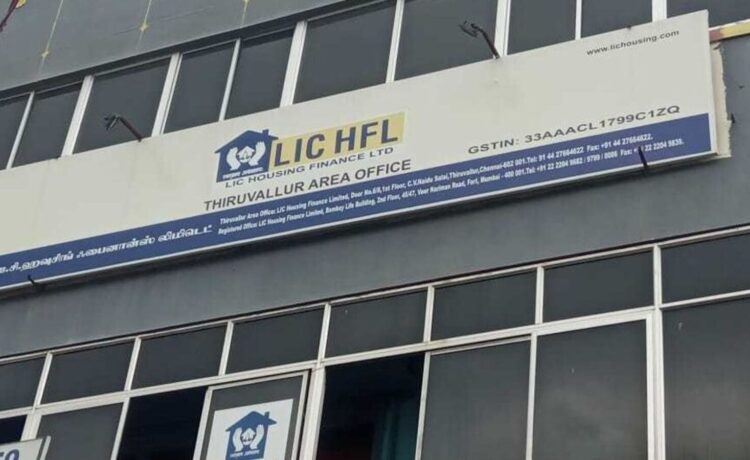LIC Housing Finance, one of India’s largest housing finance companies (HFCs), has witnessed a robust surge in its shares, yielding a remarkable 63% return over the past nine months. The stock gained momentum in March after a sluggish start in the first three months of CY23. In the previous trading session, it jumped 5% to record a new 52-week high of ₹544 apiece.
Going forward, the stock is likely to maintain its upward momentum intact, according to domestic brokerage firm Sharekhan. The brokerage underscores the stock’s attractive valuation, with a price-to-book value (P/BV) ratio of 0.7/0.6x its FY25E/FY26E estimates. Consequently, it maintains a ‘buy’ rating on the stock, revising its target price to ₹555 per share.
Also Read: LIC share price hits 52-week high. Can the stock cross over its issue price of ₹949 per share?
Sharekhan anticipates LIC Housing Finance (LICHF) to achieve double-digit Asset Under Management (AUM) growth as disbursements exhibit an upward trend (reached Rs. 5.1 billion in October 2023 against Rs. 4.5–4.8 billion/monthly in Q2 FY24). It said that the company’s management foresees sustained momentum in disbursements, expecting the sanction to disbursements ratio to increase beyond the current 80%.
The brokerage highlights the completion of the IT-related transformation that disrupted disbursements in Q1FY24. With 84% of the total book dedicated to individual home loans and strong demand in this segment, Sharekhan projects LICHF’s AUM to grow at a CAGR of 11% over FY23–26E.
During H1FY24, LICHF managed to keep NIM over 3.0%, benefiting from cumulative PLR hikes of 235 basis points during the past 12 months. While it is expected to normalise on a higher CoB, the brokerage anticipates NIM to remain at 2.8% over FY24–26E, higher than the historical range of 2.3-2.5%. It estimates PPoP to grow at a 16% CAGR over FY23–26E as compared to 8.2% over FY21–23E.
LICHF exhibited an improved Gross Stage 3 (GS-3) ratio, decreasing by 57 basis points YoY to 4.33% by September 2023, led by the company’s consistent efforts to clean its book through recoveries and write-offs. GS-1/GS-2 has remained in the range of 90–91%/4–5% over the year, indicating a contained stress level, it said.
The proportion of a better-quality individual home loan portfolio rose to 84% of the book (vs. 81% by FY22), which contained GS-3 at 1.17% as of September 2023. Since a major proportion of the bad book has already been written off and given the improvement in the asset quality matrix, Sharekhan projects contained credit cost at 0.5% over FY23–26E.
Also Read: What does RBI’s MPC meet outcome spell for banking and housing loan sectors?
For the September-ending quarter, the company reported a nearly four-fold rise in net profit to ₹1,188 crore. In the same period last year, the company posted a net profit of ₹305 crore. Its interest income jumped to ₹6,707 crore in Q2 FY24 from ₹5,049 crore a year ago.
Disclaimer: The views and recommendations given in this article are those of individual analysts. These do not represent the views of Mint. We advise investors to check with certified experts before taking any investment decisions.
Milestone Alert!Livemint tops charts as the fastest growing news website in the world 🌏 Click here to know more.

















